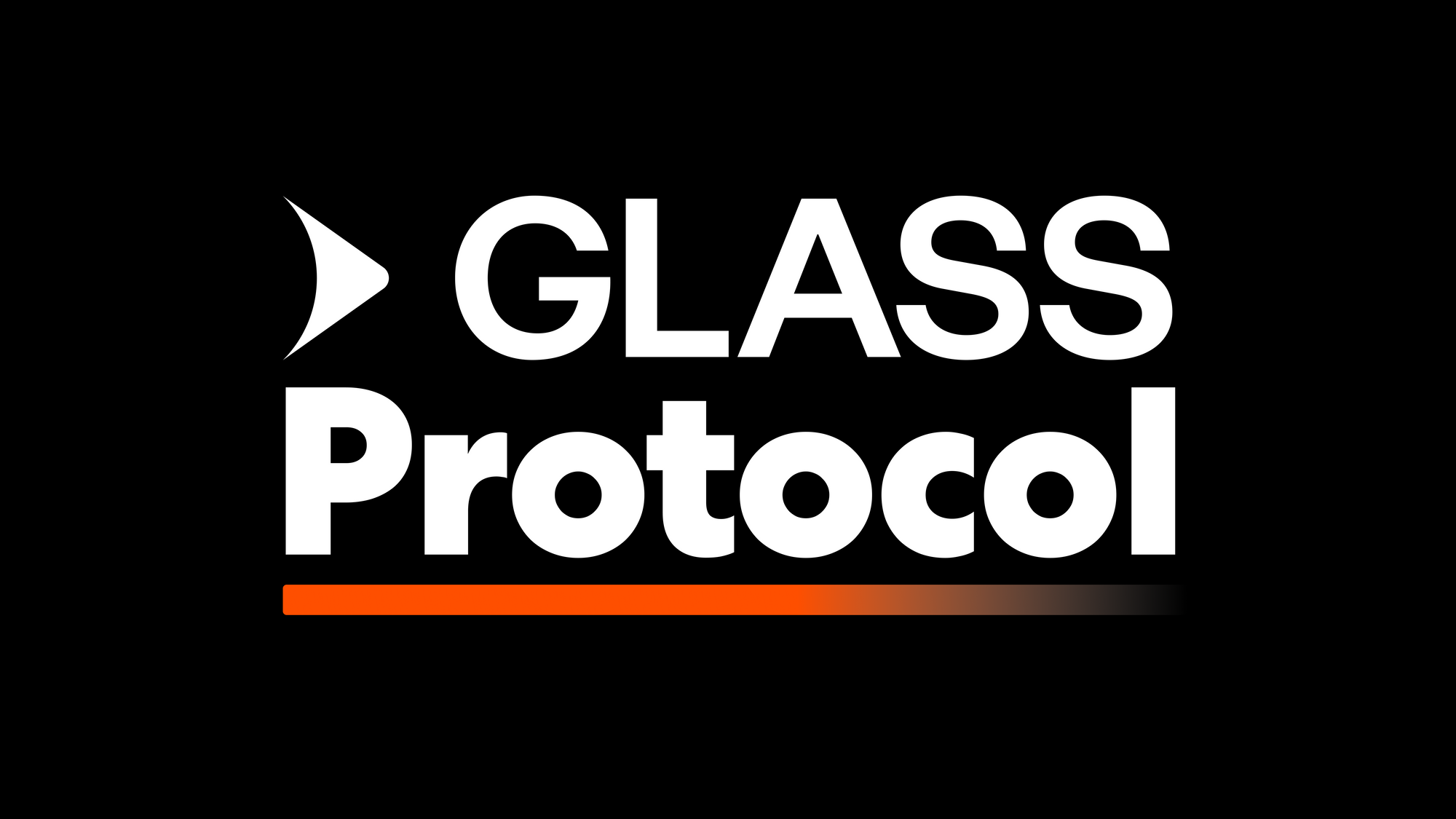Introducing Glass Protocol
With over 10,000 NFTs minted across all videos, hundreds of creators onboarded, and $1.5M+ in total volume, Glass has played an important role in shaping the way Web3 approaches video.
We pioneered the use of bonding curves, referral bonuses, and other mechanics that are now common in the industry. Our goal has always been to push decentralized media forward by creating innovative ways for people to interact with on-chain content.
Today, we are excited to announce...

Glass Protocol is a system for creating and distributing media on Ethereum that will unlock a universe of new possibilities for creators and collectors.
How It Works
All crypto-enabled media need two things: 1) on-chain storage and 2) on-chain distribution.
Up to this point, most applications have tightly coupled these aspects for the sake of simplicity and speed. This works well for getting applications off the ground but leaves a lot to be desired when it comes to implementing new functionality. Minor updates often required major changes to the system’s configuration, effectively discouraging rapid iteration.
With that in mind, we built Glass Protocol using a modular architecture that separates storage, formatting, and distribution. This approach allows us to quickly explore new media and distribution models without needing to restructure the entire system.
The protocol consists of a decentralized set of contracts designed to support any type of media (not just video) and any type of distribution (not just NFT editions). Anything you can imagine at the intersection of crypto and media can be made possible. Anything made on the protocol is available to use by anyone. And it works across EVM-compatible chains.
The base layer of Glass Protocol enables decentralized media storage. We’ve developed a standard process for taking raw media data and storing it on-chain using Arweave. This layer is intentionally limited in scope to minimize the need for changes going forward.
After uploading, the data must be formatted to a specific media type to enable viewing and playback. This is handled by the formatting layer of the protocol. At this time, we have only developed a formatter for video but we anticipate adding support for images and audio in the near future.
The final step in the process is on-chain distribution, which is handled by the top layer of the protocol. On Glass, each distribution mechanism (e.g., 1/1 auctions, limited editions, etc.) is developed as a plug-in. Thanks to the modular design, plug-ins can leverage our standard storage process while maintaining compatibility with different media types. We plan to expand our plug-in library over time and encourage developers in the community to use Glass to explore new ways of distributing media on-chain.
Here’s an example to better explain how this all comes together:
Let’s say Nico develops a lottery plug-in for Glass Protocol. This plug-in allows collectors to mint “entries” into a lottery. All entries are weighted equally, meaning that each additional entry increases the chances of winning. After a certain point, one entry is selected and the winner receives a one-of-one NFT of the artwork.
After seeing multiple successful video releases using the lottery plug-in, Varun decides that he wants to use the lottery model to release a piece of generative AI art. To achieve this, Varun would simply need to build a new formatter for that media type. The existing plug-in can be easily applied to the new media type and everything else (uploading, playback, etc.) will just work.
Additionally, Glass Protocol allows anyone to add support for additional media types and create unique plug-ins. This permissionless nature offers unprecedented flexibility and opportunities for collaboration.
What's Next
Starting today, anyone with a Glass Pass has the ability to upload and share videos on Glass.
In the coming months, we’ll work closely with creators to design and release additional plug-ins, pushing the boundaries of what’s possible on Glass and in Web3.
We’ll also publish a library of technical documentation to help developers build on Glass Protocol.
We’re currently in the process of adding user profiles, front-facing allowlists, and multi-chain support, and we’ll continue sharing updates on upcoming features as we build them.
We believe that the expansion of the crypto-media space will be driven by fast innovation and untethered creativity—and we’re building technology that makes that easier for the community. Our goal is to empower creators of all backgrounds to experiment, innovate, and expand the possibilities of decentralized media. We invite you to join us in our tireless pursuit of moving media forward.
How To Get Involved
The first step to accessing the Glass ecosystem is claiming your Glass Pass. The Glass Pass is your unique identity on Glass. In addition to letting you create videos on Glass, it holds the power to access new features, exclusive content, and free mints. You can learn more about the Glass Pass in our previous blog post.
If you made it this far, you probably care about what we're doing (at least a little bit). Subscribe to our newsletter to stay up to date with all the latest.